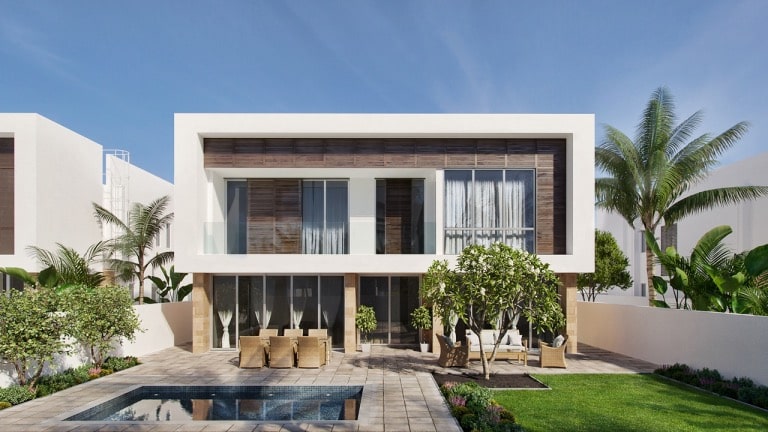What Is Architectural Visualization And Why Is It Needed?

3D rendering is a powerful tool that solves many problems and is used in different industries, from retail to construction.
Today, architecture and design firms around the world use computer rendering technology for a variety of purposes. This technology visualizes the object and helps improve safety standards, test concepts, plan materials, and reduce costs.
Beyond technical aspects, visualization enhances communication between firms and clients, thereby speeding up processes and preventing costly errors.
The popularity of 3D architectural visualization services has been growing almost since the advent of rendering software. The main advantage of this technology is that it can replace sketches or drawings, as well as allow changes to be made much easier and faster than ever before. Combined with photorealism and 360-degree views in animated and virtual environments, the applications of 3D rendering are vast.
What is 3D Visualization?
Conceptually, visualization is a way of communicating information through images, 3D models, and renderings. Most often in the architecture sector, technology is used to show clients what a property will look like after construction or renovation work is completed.
Creating a 3D model of an object instead of 2D sketches is practical for several reasons. Unlike sketches, the original 3D model can be modified if changes need to be made to the building.
If you use sketches or photographs, each change requires the creation of new ones. With rendering, you can make multiple renderings of the same model from different angles without having to start everything from scratch. 3D models are also better because they are ultra-realistic.
Regardless of the type, visualization is important for projects. For people without an architectural background, it can be difficult to look at a drawing and imagine what the actual structure may look like without the aid of visualization. It doesn’t have to be just a still image; it could be something more complex, an animated video, or a virtual reality tour.
A 3D rendering can also help to get a clear picture during the designing stage. Architects can step back and see the object from the outside without actually building it. If the proportions seem off or clients want to change certain aspects, this can easily be done with a few adjustments before construction begins.
Due to all these benefits, architectural visualization has become an integral part of the industry and is used regularly by most firms these days.
Architectural Visualization: Historical Aspect
Obviously, 3D rendering is a new phenomenon. However, the concept of architectural visualization has been around for centuries. Previously in construction, people used sketches and physical models to plan buildings.
Ancient Egypt is among the first civilizations to use architectural visualization to create pyramids and other structures.
Many of the first visualizations lacked symmetry and depth and only became truly good plans in the Middle Ages. Over time, these plans began to look more and more like 2D drawings and sketches.
It wasn’t until the advent of 3D rendering software less than 50 years ago that visualizations created from drawings, models, and sketches evolved into the modern 3D renderings.
3D Architectural Visualization Today
Architectural visualization services are being actively introduced and used for a wide range of tasks. Rendering is among the main tools when it comes to simple renovation of a room or rearrangement of furniture, as well as for the construction of complex multi-story buildings.
With the development of technology, new opportunities appear in architectural visualization, such as augmented and virtual reality, multiple 3D images from different angles, animation, etc.
Among the innovations of recent years is the introduction of augmented reality, which combines 3D models and parts of the real world, showing what a particular area can look like after completion of work. Using AR, you can also demonstrate what furniture will look like in your home before you buy it.
At the same time, virtual reality technology allows buyers to put on glasses and walk around the property in virtual reality.
The possibilities for architectural visualization are endless. Highly realistic 3D renderings can amaze clients and reveal design concepts and features in detail. In addition, clients are more likely to recommend architecture firms that use the latest software and technologies that surprise them with their quality, realism, and ease of understanding.
Architectural Rendering Software
There are several types of 3D rendering software, each with its own features and functions geared towards specific tasks.
The most popular architectural rendering software includes:
ArchiCAD
It is among the most common software for designing and creating hyper-realistic visualizations. ArchiCAD includes many tools for 2D and 3D drawing, as well as allows you to store huge amounts of model data.
Revit
This software contains all the necessary tools in one place. Revit is a useful tool for Building Information Modeling (BIM). It also has a feature that allows collaboration with other designers, making it easier to access the model to make changes.
In addition, the software has a library of materials that speeds up the development process and provides excellent rendering capabilities.
Cedreo
This software is perfect for beginners. With over 7,000 3D objects and a clear interface, Cedreo is a great tool for creating architectural drawings and realistic 3D renderings.
Cedreo was developed with a focus on interior design and residential projects.

3Ds Max
3Ds Max is one of the most powerful software. It provides a high level of detail and photorealism, which can sometimes make it difficult to distinguish renderings from reality.
The wide spectrum of capabilities for working with textures, light, and colors, as well as 3Ds Max’s compatibility with other software such as AutoCAD and Revit, make it an excellent product for solving a huge range of architectural and design tasks.
V-Ray
Like 3Ds Max, V-Ray works great with other software. This product includes hundreds of different features useful for creating visualizations. In addition, one of the main advantages of V-Ray is that it can render images relatively quickly, which saves time. Fast rendering may not be as good, but if you need a tool that can quickly demonstrate the main aspects of a design, V-Ray is a perfect option.
Rhino3D
Although Rhino3D is not exactly architectural software, this tool allows you to create realistic visualizations. It’s also more flexible software, allowing more room for creative freedom.
Maxwell Render
It is one of the most powerful and popular software for architectural visualization. Maxwell Render has a complete set of tools to create hyper-realistic images with stunning lighting.
Although the tool requires a long learning curve, it offers many features and capabilities for creating 3D renderings, making changes, and achieving maximum realism.





